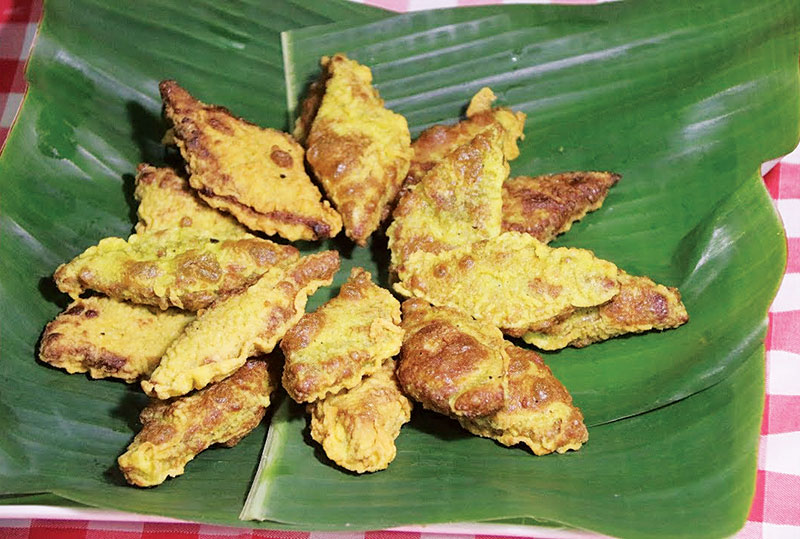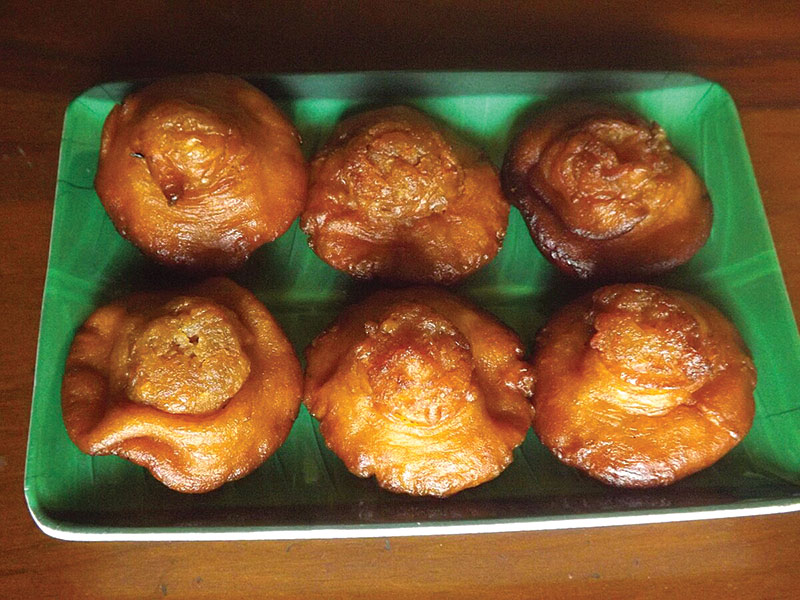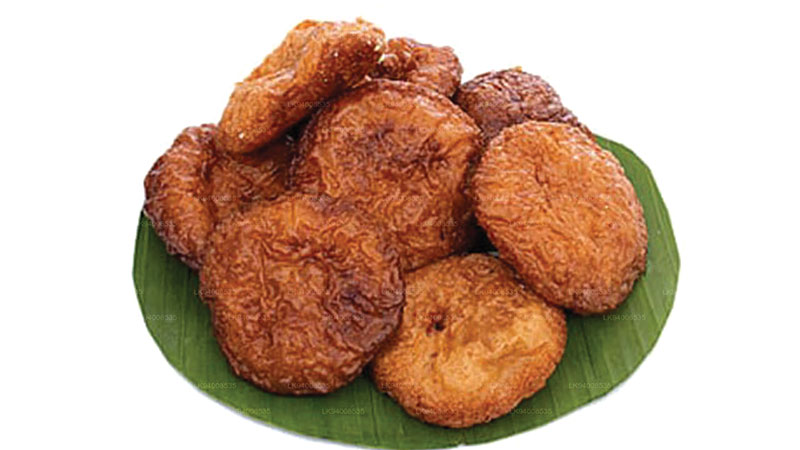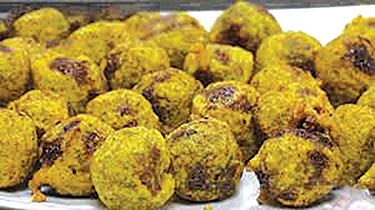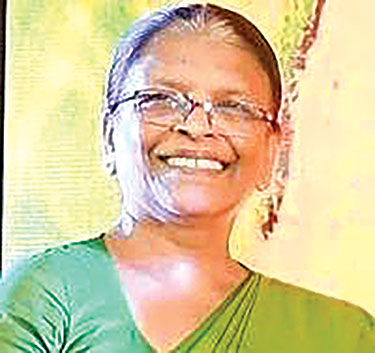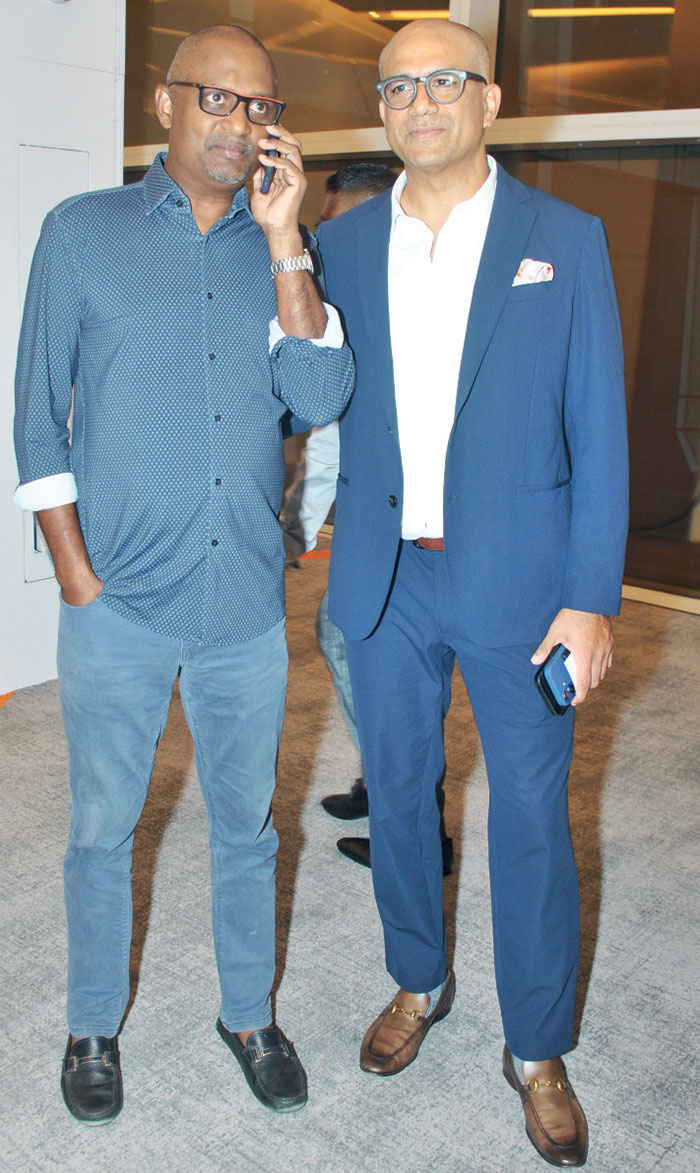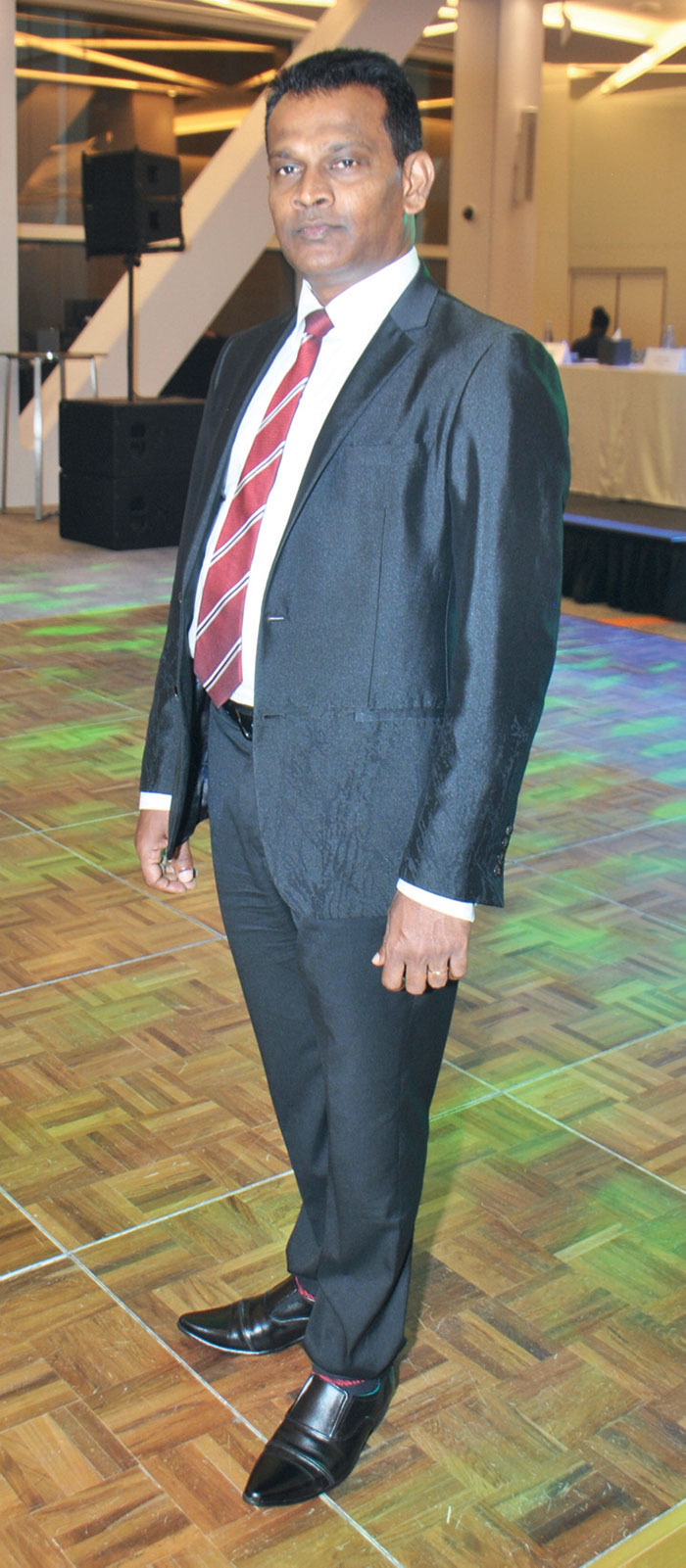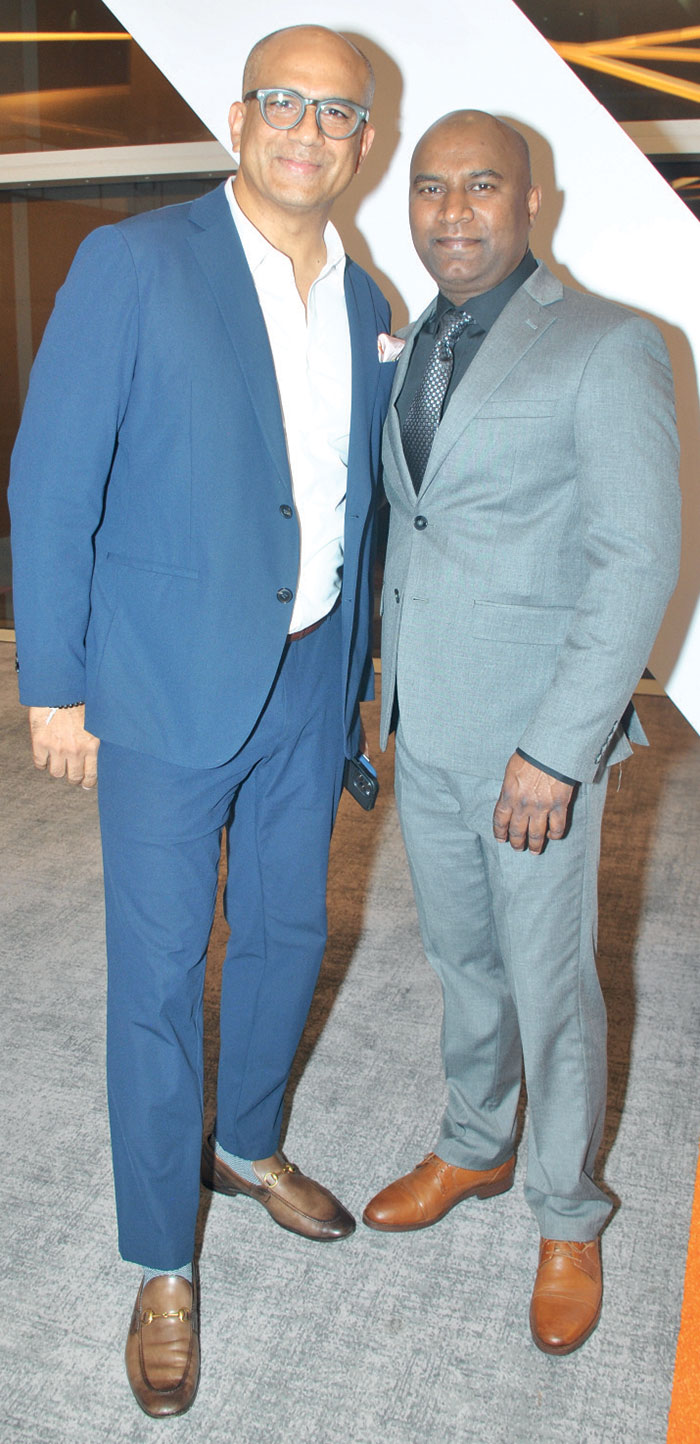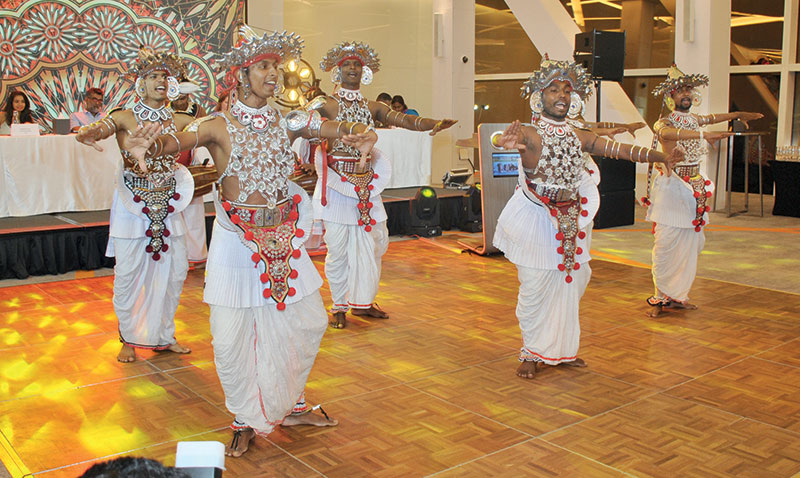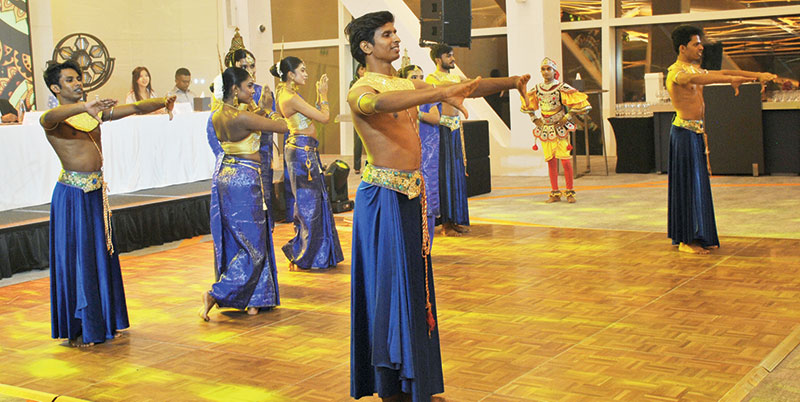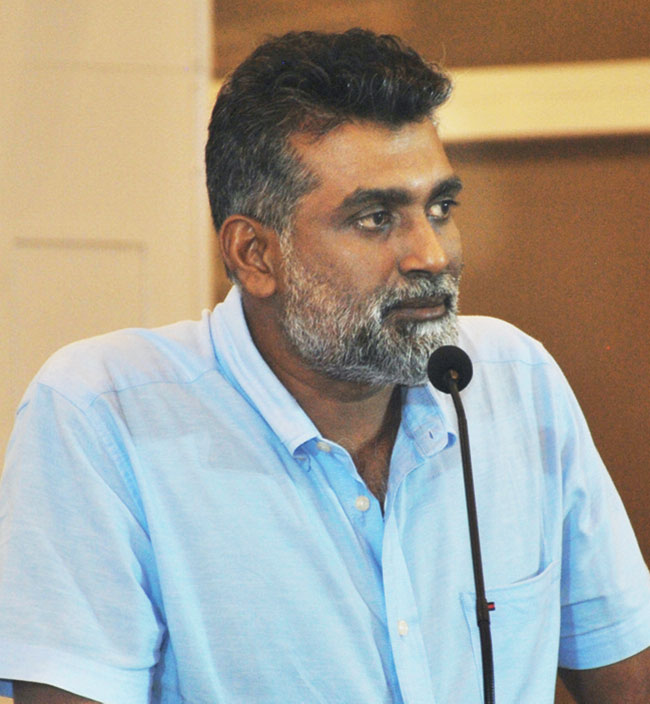Life style
Ravages of the Rangoon

On November 1, 1871, Australia-bound steamer, SS Rangoon having set sail from the Galle Harbour, hit a shoal of deadly rocks known as Kada Rocks and ran aground. 150 years later since she went down to rest on the seabed, we recapture her last moments and share the accounts of some of the best Sri Lankan divers who had been captivated by her wreck site of scenic beauty, almost losing the sense of time
By Randima Attygalle
For almost one week Peninsular and Oriental Steam Navigating Company owned steamer SS Rangoon was anchored at the Galle Harbor waiting for the arrival of the SS Travencore from China. The crew and the passengers of the Australian-bound SS Rangoon were restless waiting for the SS Travencore which was carrying mail for Australian colonies. Captain Skottowe who was at the helm of the steamer too was impatient to call it a day completing his final voyage before retirement. Three days had gone by with still no Travencore anywhere in sight. The irritated local agent for the shipping line finally gave the nod for the Rangoon to sail. However, Captain Skottowe was instructed by the agent that if at all he were to sight the Travencore, the much awaited mail from China was to be transferred from it. It was November 1, 1871. Around 6 pm, finally the Rangoon left the shores of the island. Although the Travencore never reached on time, even after the Rangoon set sail, several small boats which had arrived at the Galle Harbor soon after the Rangoon had left, sped up to the vessel to transfer mail from the British-occupied Ceylon to Australia.
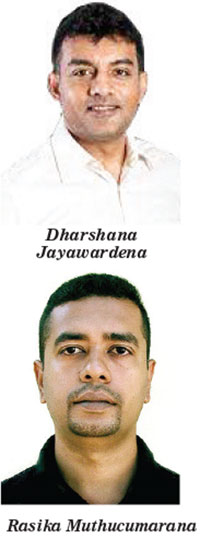 The steamer was now more than 2kmfrom a shoal of deadly rocks known as the Kada Rocks and a strong north-westerly current was active. In Ghosts of the Deep- Diving the shipwrecks of Sri Lanka, author Dharshana Jayawardena- techdiver and an underwater photographer documents: ‘Although marked with a beacon, they (the Kada Rocks) lurked just a few kilometres southeast of the Galle Fort, invisible to the Rangoon in the dark. It did not take long for the unpowered ship to drift, broadside towards the rocks and 25 minutes after she had set sail, the Rangoon struck the shoal somewhere aft amidships and almost immediately started taking in water.’
The steamer was now more than 2kmfrom a shoal of deadly rocks known as the Kada Rocks and a strong north-westerly current was active. In Ghosts of the Deep- Diving the shipwrecks of Sri Lanka, author Dharshana Jayawardena- techdiver and an underwater photographer documents: ‘Although marked with a beacon, they (the Kada Rocks) lurked just a few kilometres southeast of the Galle Fort, invisible to the Rangoon in the dark. It did not take long for the unpowered ship to drift, broadside towards the rocks and 25 minutes after she had set sail, the Rangoon struck the shoal somewhere aft amidships and almost immediately started taking in water.’
While below the deck of the steamer the crew frantically worked the pumps to drain the holds and stoked the coal into the boilers to keep the engines running despite a rapidly increasing water line, women and children were ordered into life boats. Amidst the chaos of transferring them to boats ‘on deck, lights, rockets and flash guns of various colours were fired to alert authorities ashore and any othervessels close enough to come to assistance.’
Jayawardena, in a dramatic account goes onto describe the mayhem: ‘However, the Travencore threw another proverbial wrench into the works. Harbor authorities who saw the lights assumed and not without some relief that the Rangoon had finally made contact with the Travencore to exchange mail!’. Seeing the distress signals, SS Berenice and the SS Sydenham came to rescue the passengers off the Rangoon. Two more vessels- SS Arrow and the SS Hercules also joined in the rescue mission. ‘The rising water levels finally put the boilers out and the engines choked to a complete stop’, writes Jayawardena. Mercifully, all passengers and the crew were
saved, but there was no chance of the SS Rangoon being towed. While the captain and the crew kept vigil, a fleet of canoes from the nearby villages raced up to the sinking vessel to plunder whatever valuables on board. While many of them were collecting anything of value that was floating around, a few more daring ones wasted no time going below decks in search of more riches.
search of more riches. ‘With startling, crackling and snapping noises her stern suddenly plunged into the sea. The stem at the bow rose towards the stars, while billows of vapour caused by escaping air, gushed out of the Rangoon like its last breath. As everyone gazed in horror, she steadily sank into the depths of the ocean and disappeared from sight. All that remained of her were the top of the three masts,’ Jayawardena’s account says. In a twist of fate, while all 58 passengers and 149 crew escaped, the only casualties were the plunderers who boarded the vessel in search of loot. Only 13 of the 700 mailbags were saved. For more than a century, the SS Rangoon lay in deep slumber in the depths of the ocean undisturbed until the divers and fishermen stumbled upon the wreck in 1986. Lying at a depth of 30m right in front of the outer Galle Harbour the wreck of the Rangoon is a scenic dive site, says Jayawardena who first dived to it in 2006, exactly 20 years after the wreck was first discovered. Among the first few divers to have explored the wreck within weeks of its discovery, was Dr. Malik Fernando, a founder member of the Sri Lanka Sub-Aqua Club and also a member of the team who helped setup the Maritime Archaeology Unit here in the early 90s.
In an account detailing his first dive to the wreck of the Rangoon and the recovery of several artefacts, Dr. Fernando says that the ship’s bell had been recovered enabling the confirmation that it was the wreck of the Rangoon, however, the bell had disappeared soon after. Soon the news of ‘a large quantity of ceramicware spilling out of a hole in the side’ reached them. These were being ‘avidly collected by local divers intent on earning a fast buck by feeding the antique shops.’ Rising early on March 16, 1986 for the dive, Dr. Fernando recollects seeing Halley’s Comet in the south-eastern sky ‘at an elevation of 45 degrees, a good omen as it turned out to be.’ Describing the first part of the wreck that came into his view ‘like the palp of an enormous squid’, the diver documents that the ‘hull of the ship itself was upright on the sand’. The enormous hole in the side of the hull at the starboard quarter was ‘spilling masses of chinaware on to the sand.’ A few years later in a follow up dive in 1988, Dr Fernando observed that the ‘ship appeared to have been flattened’. Underwater blasting of wrecks in the area in search of non-ferrous metals and blast fishing targeting the shoals which thrive in wreck sites are attributed to this sad state of affairs.

“Although the wreck of the Rangoon is quite deteriorated, it’s a spectacular dive site making a diver forego the sense of time,” says Jayawardena. The stem at the bow reminds one of an ancient Viking ship he says although the Rangoon was far from it. “It was 60 m long with a tonnage of 1,800.” The sheer beauty of the marine life replete with soldier fish, glass fish, rabbit fish, grey snappers and bluefin trevally often distract a diver from focusing on the wreck says Jaywardena who had dived there several times. Sri Lanka can be termed the ‘shipwreck capital of South Asia’ says the explorer. “With over 100 shipwrecks dotting its coast, and many of them providing a great wreck diving experience, Sri Lanka leads the scene even surpassing the wreck diving experiences offered by countries such as the Maldives, India, Thailand, Malaysia and Indonesia. In this context, the SS Rangoon is valuable to the country historically as well as from a tourism revenue generation point of view,” observes Jayawardena.

The Rangoon is among the eight shipwrecks found in Galle which could be accessed for recreational diving and is also the oldest ‘visible’ wreck among them, says Rasika Muthucumarana, Maritime Archaeologist from the Maritime Archaeology Unit of the Central Cultural Fund in Galle. “Most of the older shipwrecks dating back to the Dutch period are buried and are not visible to the recreational diver and they are only of archaeological importance. The Rangoon on the other hand is an important wreck for it has not only a recreational value but also a historical and a tourism value. It is also very rich in marine life.”
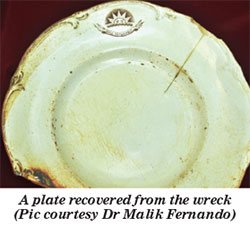
Lying on a clear, sandy bottom, the Rangoon is also considered an ‘ideal wreck’ because most of its components are still clearly identifiable says the Marine Archaeologist. “Her bow, anchor, stern, propeller and the mast are still visible.” Sadly, however, a good proportion of Rangoon’s bow was damaged last year when a ship was anchored on it, says Muthucumarana who calls for better awareness among the law implementing agencies about these shipwrecks which are not only an integral part of marine archaeology but also a vital tourism-generating source.
Pic credit: Rasika
Muthucumarana, Dr Malik
Fernando, Ghosts of the
Deep- Diving the shipwrecks of
Sri Lanka
Life style
Kevum – Befitting a King
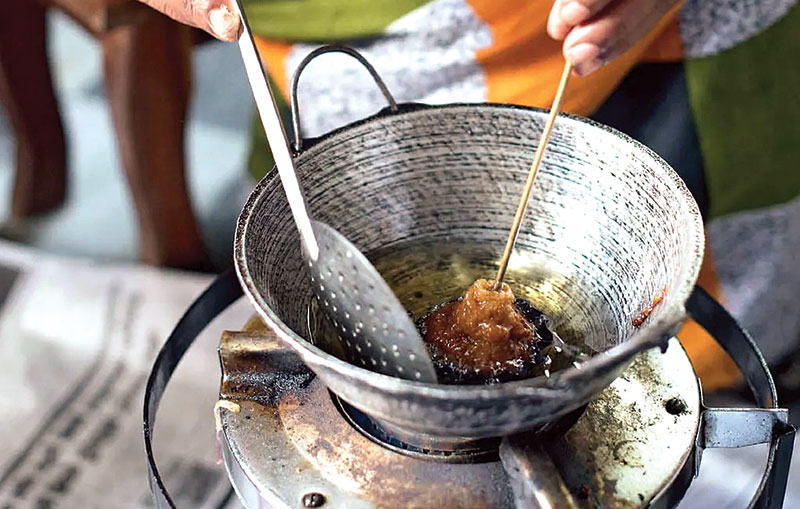
The avurudu table of any Lankan home is complete only when it is laden with kevum. Dating back to ancient times, many types of kevum are chronicled even in our classical texts. The Dutch rulers of the island are said to have relished them, some even asking if they grew on trees… A delicacy which was offered to visiting dignitaries, kevum was revered by our kings even in the battle field not only as an energy-booster but also as a wound disinfectant.
BY RANDIMA ATTYGALLE
The culmination of Avurudu preparations in my childhood with my grandparents was marked by the ritual of Kevum-making. Athamma would ‘book in advance’ the kevum specialist Soida Hami (Soida aachchi to us children), and install a special hearth in her back verendah for the grand moment. I would watch Soida aachchi in wonderment as her thick batter of rice flour and best of kithul treacle shaping into kevums in a hot wok of coconut oil. The long kevum koora in her nimble fingers would achieve the feat of the perfect konde. It was almost a rite of reverence, so much so I was not supposed to talk to her until the first batch of Konda-kevums was completed. Like many old-folk of her vintage, Soida aachchi believed that talking while the first few kevums are done would result in a flawed product.
She would then place each perfect Konda kevuma on a banana leaf for the excess oil to drain. Once the whole exercise was completed, she would place Konda-kevum in large earthen pots and store them in the dum messa or the storage area above the main hearth of the kitchen. She would spare me only one kevuma and the rest had to wait until the auspicious time on avurudu day!
Travellers’ records
Robert Knox an English sailor who was held in captive in the court of the Kandyan King Rajasinghe II and one of the prolific chroniclers of ancient Ceylon in his famous work, An Historical relation of the Island Ceylon documents on the sweet meats of Lankans with a special account of kevum.
‘They have several sorts of sweet-meats. One they call Caown. It is like to a fritter made of Rice-flower and Jaggory. They make them up in little lumps and lay them upon a leaf, and then press them with their thumbs and put them into a frying-pan and fry them in Coker-nut Oyl or Butter. When the Dutch came first to Columba, the King ordered these Caown to be made and sent to them as a royal treat. And they say, the Dutch did so admire them, that they asked if they grew not upon trees, supposing it past the Art of man to make such dainties.’ (Spelling as in the original Knox)
The account of Knox enables rich insights into this wonder of a sweet meat which enthralled many a traveller to the island including dignitaries. The European trader Cosmas who visited Ceylon in 545-550 AD, documents that along with gems, Kevum and Kalu dodol from Ceylon were taken to the Roman court of Emperor Claudius during the sixth century.
- Mun kevum
- Konda kevum
- Athirasa
Classical literature
Kevum dates back to ancient times and our classical texts such as the Ummagga jatakaya, Pujawaliya and Saddharma Ratanawaliya bear evidence to this fact. “Originally known as poopa this sweet meat came to be known as kevum in the Dambadeniya-Kurunegala era. Jathaka atuwa getapadaya mentions 18 kinds of sweet-meats found in the ancient Sri Lanka and among them are several types of kevum such as sendi kevum, mal kevum, athirasa, pena kevum, raa-kevum,” says Prof. Kusumalatha Lankamulla from the Department of Sinhala and Mass Communication at the University of Sri Jayewardenepura.
This scholar with research interest in Culture, Traditional and Modern Literature goes onto note that Mahawamsa in its 32nd chapter refers to two types of kevum in the context of alms offered by King Dutugemunu. The two types- thel kevum and maha de kuvum mentioned, were fried in ghee. “Many of our classical texts mention kevum in multiple festive contexts beyond avurudu. In Ummagga jathakaya, kevum is mentioned as a fitting gift to be taken when visiting parents. Saddharma Ratanawaliya refers to boxes of kevum or kevum pesa.“
An energy booster
Among the popular kevum types found today are Konda kevum, athirasa, mun-kevum, naran kevum and hendi-kevum. Although the ingredients used for each type may slightly differ, rice flour and treacle (now largely replaced with sugar) remain common to all. The much sought after Konda kevum which is relatively a later addition to the range of kevum found here at home is believed to have originated during the Kandyan period says Prof. Lankamulla. “During the Kandyan period, men were prohibited from cutting their hair off and they had to tie it in form of a knot on top of their heads. Konda kevuma is believed to have been inspired by this practice.”
Traditionally, Sinhalese soldiers were given a bag of kevum when going to war. History has it that King Dutugemunu went a step ahead and used kevum to treat wounded soldiers. His army used to prepare kevum months in advance and keep them exposed to air so that the mould can grow on them.
This mould in today’s language had ‘antibiotic properties’ and was used on the wounds of the soldiers to prevent them from festering. “In a bid to undermine the pride of place given to kevum as a super food by the locals, the British coined the famous derogatory adage: ‘Sinhalaya is a fool but is an ace at eating kevum’. (Sinhalaya modaya-kevum kanna yodaya)
Steeped in tradition
Superstitious beliefs surrounding the process of kevum-making are not uncommon and these vary from region to region in the island, says Prof. Lankamulla. Regardless of the region, several common traditions were followed by our ancestors and these still continue to be observed in several parts of the country, she says. “The frying pan with coconut oil to prepare the kevum was kept on fire at an auspicious time and village matriarchs who were highly skilled were mobilized for the occasion. Women also believed that they must refrain from talking when the first kevum is being made. For centuries, the first kevum was considered to be the ‘konduru kevum’, dedicated to the sledge-fly or the konduruwa. The village women would hang the first kevum up for the insects so that the rest would be unspoilt.”
With the passage of time, many Lankans, particularly city-dwellers depend on commercially available avurudu kevili including kevum. Although kevum is synonymous with avurudu, today people get to enjoy it round the year thanks to many sweet meat kiosks found in cities. Although these outlets have best sales during avurudu, they get plenty of orders from Lankans travelling abroad or coming home for vacation at other times of the year as well.
One such die-hard kevum fan is Uthpala Ranatunga from Ottawa, Canada. “My Loku amma (oldest aunt) makes it a point to pack me a parcel of best quality Konda kevum to take with me whenever I’m in Sri Lanka for a vacation.
I deep-freeze them for longer use and eat them sparingly,” says Uthpala to whom kevum is always a strong reminder of home. “Each time I indulge in them I feel nostalgic and miss home.”
Kevum is an integral part of the Lankan culture, finding its way from ancient classical literature to that of the contemporary including children’s literature and arts. The much-loved sweet meat is celebrated in the work of Sybil Wettasinghe – the iconic story teller and illustrator.
Come avurudu, we often hear the intonation of Lionel Ranwala, the eminent musician, vocalist and an authority on Sri Lankan folk music, whose tribute to the enduring legacy of this delicacy is one of the best in our times:
Me avurudu kale -sinaha weyan rale
Thel ihirunu kewum gediya wage…
Life style
Festive glamour at Nethara

Nethara Collection ,is a world of export quality garments in Diulpitiya, Boralesgamuwa, is infused with an ultra festive spirit this season catering to the women of today. Unbelievable offers and discounts from Nethara for Sinhala anTamil new year. On selection of women’s clothing, ranges from casual options to formal occasion wear,all at friendly prices,to enhance your wardrobe this festive season.
Nethara collection, started small in 2017, but soon it outgrew, today with an ever increasing customer base, branded and non branded clothing this shopping centre has become very popular. Export quality , stylish dresses, crop tops, fancy blouses, trousers and many more to flaunt yourself and enhance your wardrobe.Their extensive collection, maintain low pricing allowing everybody to have a chance to shop till they drop dead. From casual wear to formal wear,they have women to men’s items like tee shirts, shirts for every occasion.
Nethara clothing has long remained a name that has struck a chord with Sri Lankan shoppers. “We believe our success has been based up on the premise that absolute sincerity towards customers and no matter what the economic situation that prevails, we try our level best to keep our prices low and within everybody’s budget, said managing director, Nethara Collection Sampath Kumara.
This April season Nethara collection brings an all new collection of export quality seasonal wear. Celebrate the season with exclusive offers made just for you! Dresses, blouses, casual, formal wear denim, men’s shirts and many more… world of limitless style and joy!
This festive season Nethara unwraps a celebration of warmth, style and sophistication. Immense yourself in a vibrant festive atmosphere as you explore thier collection under one roof 345 Boralasgamuwa With a focus on quality, affordability and customer satisfaction, Nethara export quality boutique invites you to celebrate the Sinhala and Tamil New Year in style.
(Zanita)
Life style
Sri Lanka tourism unveils strategic vision
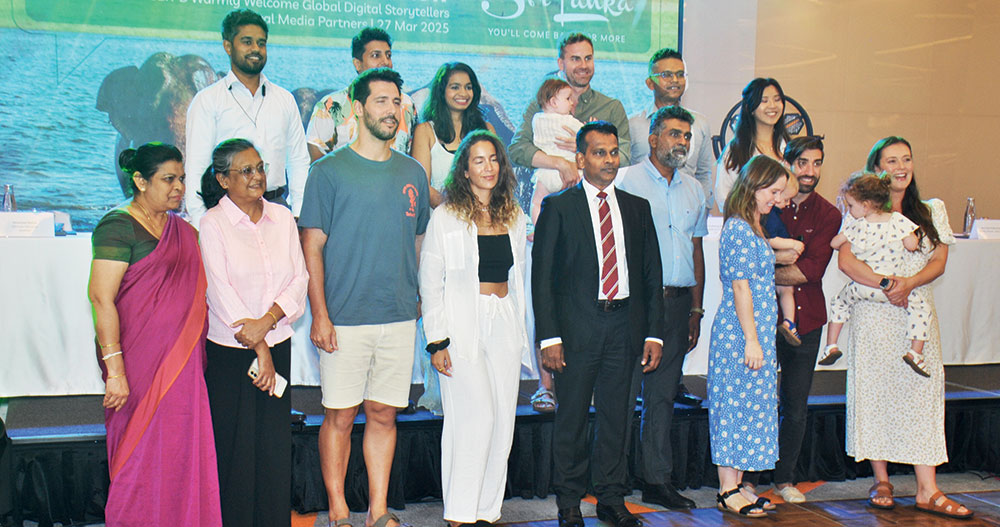
Sri Lanka Tourism Bureau hosted a landmark event at cinnamon Life for an ambitious campaign to spotlight Sri Lanka as a top travel destination. This initiative hosted international influencers and local media to capture the unique charm of Sri Lanka’s destinations. These travel influencers will share thier real time content across platforms like Instragrams Tik Tok and youtube amplifying Sr Lanka as a must visit destination. Many media personal, bloggers and influencers participated in this event which will take them on a tourism travel featuring some of Sri Lanka’s top destination.
Sri Lanka Tourism Promotion Bureau (SLTPB) hosted a landmark event at the Cinnamon Life Hotel, Colombo. The event was led by . Deputy Minister of Tourism, Prof. Ruwan Ranasinghe, with the participation of SLTPB Chairman Buddika Hewawasam, officials, travel influencers and their families, as well as journalists specializing in tourism sector reporting. The gathering set the stage for transformative initiatives aimed at bolstering Sri Lanka’s tourism sector and redefining its global image.
In his opening remarks, Buddika Hewawasam underscored the challenges facing the tourism sector, particularly the seasonal dip in arrivals during the summer months. “The next few years will be the most challenging period for all of us,” Hewawasam stated, emphasizing the need for international collaboration and strategic development. He further highlighted the critical role played by international travel influencers and media professionals in raising awareness of Sri Lanka’s hospitality and inspiring tourists worldwide to visit.
- Dileep Mudadeniya
- Deputy Minister of TourismProfess or Dr Ruwan Ranasinghe
- Guests
The Deputy Minister of Tourism, Prof. Ruwan Ranasinghe, detailed the innovative nature of the campaign and its importance in showcasing Sri Lanka’s rich heritage, natural beauty, and diverse travel experiences to mainstream and emerging tourism markets.
During the event, several prominent travel influencers shared their thoughts about Sri Lanka’s uniqueness as a destination. They highlighted that Sri Lanka is a country where travellers don’t need to worry about finding incredible experiences—nature has already done the hard work. The influencers remarked on Sri Lanka’s unparalleled diversity, noting that it is possible to experience a range of climates within just a few hours by travelling to different parts of the island. From sun-soaked beaches to misty highlands, and from lush forests to cultural treasures, Sri Lanka offers a world of adventures in a compact and accessible setting.
In comparison to destinations like Bali, which some influencers noted as overcrowded, Sri Lanka stands out with stable and balanced tourism activities. The event attendees were thrilled by the country’s warm hospitality, authentic DDirector cuisine with an impressive variety, long history, and rich culture. These qualities make Sri Lanka not only inviting but genuinely unforgettable for visitors.
The travel influencers in attendance expressed strong confidence in their ability to share this powerful message with the world. They were determined to shape international travel trends by showcasing Sri Lanka’s unique appeal, while also helping to attract new types of guests. The influencers represented a diverse range of travel segments, including family travellers, solo female travellers, honeymooners, and adventure seekers. Their efforts were supported by Sri Lanka Tourism officials and journalists representing both local and international media agencies.
The ‘Sri Lanka, A Story for Every Season’ campaign represents SLTPB’s first large-scale effort to boost summer travel through digital storytelling and influencer collaboration.
Featuring a curated destination familiarization tour, the campaign will spotlight wildlife safaris, cultural heritage, spiritual pilgrimage sites, scenic landscapes, and adventure tourism. Influencers will produce high-impact content for platforms like Instagram, YouTube, and Facebook, reaching over 2.2 million travel enthusiasts globally.
Sri Lanka Tourism shared impressive winter peak season results, with international arrivals reaching 665,295 by March 23, 2025—a marked increase compared to the previous year. These figures illustrate the sector’s potential for growth, and the campaign aims to sustain momentum throughout the summer months.
The event was a call to action for stakeholders to unite in elevating Sri Lanka’s global tourism appeal. With plans to generate over LKR 32 million worth of media coverage and connect with diverse travel segments, the campaign underscores Sri Lanka’s commitment to redefining itself as a leading destination for year-round travel.
By Zanita Careem
Pix by Darmasena Welipitiya
-

 Business2 days ago
Business2 days agoDaraz Sri Lanka ushers in the New Year with 4.4 Avurudu Wasi Pro Max – Sri Lanka’s biggest online Avurudu sale
-

 News7 days ago
News7 days agoBid to include genocide allegation against Sri Lanka in Canada’s school curriculum thwarted
-

 Features24 hours ago
Features24 hours agoStarlink in the Global South
-

 Business3 days ago
Business3 days agoStrengthening SDG integration into provincial planning and development process
-

 Business2 days ago
Business2 days agoNew SL Sovereign Bonds win foreign investor confidence
-

 Sports4 days ago
Sports4 days agoTo play or not to play is Richmond’s decision
-

 Features24 hours ago
Features24 hours agoModi’s Sri Lanka Sojourn
-

 Latest News6 days ago
Latest News6 days agoIPL 2025: Rookies Ashwani and Rickelton lead Mumbai Indians to first win


